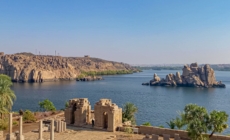-
Spaceman, Senator, V.P. Pick? Kamala Harris Sizes Up Mark Kelly. - 23 mins ago
-
Drinking Water Warning Issued for City in Kansas - 31 mins ago
-
Olympics News: Best Moments From the Opening Ceremony - about 1 hour ago
-
Opening Ceremony Misses the Boat - about 1 hour ago
-
Harvey Weinstein’s Medical Condition Takes Massive Turn - 2 hours ago
-
Vivian Jenna Wilson, Elon Musk’s Transgender Daughter, Says He Was ‘Cruel’ and ‘Uncaring’ - 2 hours ago
-
How to Watch Men’s Basketball at the 2024 Paris Olympics: Streams, Schedule - 2 hours ago
-
Trump, Honing Attacks on Harris, Casts Her as a Far-Left Threat - 3 hours ago
-
Woman Explains Why She Decided To Have Rescue Dog Euthanized Over Behavior - 3 hours ago
-
Justice Dept. Defends TikTok Law That Forces App’s Sale or Ban - 3 hours ago
Water Crisis in India’s Silicon Valley
The water tankers seeking to fill their bellies bounced past the dry lakes of India’s booming technology capital. Their bleary-eyed drivers waited in line to suck what they could from wells dug a mile deep into dusty lots between app offices and apartment towers named for bougainvillea — all built before sewage and water lines could reach them.
At one well, where neighbors lamented the loss of a mango grove, a handwritten logbook listed the water runs of a crisis: 3:15 and 4:10 one morning; 12:58, 2:27 and 3:29 the next.
“I get 50 calls a day,” said Prakash Chudegowda, a tanker driver in south Bengaluru, also known as Bangalore, as he connected a hose to the well. “I can only get to 15.”
The Silicon Valley of South Asia has a nature issue — a pain point that software cannot solve. In the sprawl beyond Bengaluru’s core, where dreams of tech riches usually grow, schools lack water to flush toilets. Washing machines have gone quiet. Showers are being postponed, and children with only dirty water to drink are being hospitalized with typhoid fever.
The big problem afflicting Bengaluru is not a lack of rain (it gets plenty, about as much as Seattle), but rather what often holds this giant, energetic nation back: arthritic governance. As the city rushed toward the digital future, tripling its population to 15 million since the 1990s and building a lively tech ecosystem, water management fell behind and never caught up as otherwise healthy aquifers were drawn dry by the unchecked spread of urban bore wells.
Failures of environmental stewardship are common across a country with severe pollution and an acute need for economic growth to provide for 1.4 billion people, spanning political parties an India’s north-south divide. But Bengaluru’s water struggle is especially withering for many — and motivating for some who have water sales or reform in mind — because the city sees itself as an innovator. And in this case, the causes and solutions are well known.
“There is no crisis of water availability,” said Vishwanath Srikantaiah, a water researcher and urban planner in Bengaluru. “It’s a clear-cut crisis of state failure.”
Viewed another way, he added in an interview at his home, where books about water and rivers were stacked nearly to the ceiling, it is a crisis caused by a lack of imagination.
As public policy experts tell it, Bengaluru and the broader state of Karnataka have been too slow to plan for growth, too divided across agencies and too rigid in their reliance on pumping water uphill from reservoirs along the Kaveri River more than 50 miles away.
Despite a long history of local hydrology — Nadaprabhu Kempegowda, the 16th-century founder of Bengaluru, built hundreds of cascading lakes for irrigation — officials have mostly stuck with the traditional engineering option that their predecessors turned to in the 1950s and ’60s.
That is the case despite its challenges and expense. The energy cost alone for pumping eats up 75 percent of the Bangalore Water Supply and Sewerage Board’s revenue, while supplying only around half of what the city needs.
The rest, for decades, has come from bore wells — holes about six inches wide that act like straws for water from aquifers below. An authority separate from the water board has punched 14,000 of them into the ground, half of which are now dry, according to officials. Experts estimate that residents have drilled another 450,000 to 500,000 into the cityscape, without the government knowing where or having a clear sense of their impact.
In much of the city, the wells are like doorbells, plentiful but seemingly invisible until someone points them out. Drilling failures appear as cutout circles on quieter streets; successes are often covered in flowers, with a black hose snaking into a home down the street.
Spending a day in the cab of Mr. Chudegowda’s tanker truck offered a glimpse of how the ad hoc system works. At one stop, drivers wrote their times in a logbook while cameras watched how much they took. At another the supply was slow and organized: A half-dozen drivers took 20-minute turns for fill-ups of around 6,000 liters, or about 1,600 gallons, just a few steps from a lake depleted to a puddle. At a third, a building owner sold a load to Mr. Chudegowda without the wait.
“Every minute counts,” he said as he climbed out of the truck.
His customers ranged from a bra factory with 100 workers to a small apartment building, all within a few miles to maximize profit. He charged each up to 1,500 rupees ($18) for each tanker load, more than double the going rate from a few months ago, which he considered justified because costs had gone up.
Drills — easily hired from companies with storefronts across the city — often fail to find water or have to go deeper now, which means more electricity and gas for the pumps pulling precious liquid from the earth.
The effects, while not at “Dune”-like levels, have become more visible in recent weeks, especially in the tech corridors, with their blur of luxury apartments, slums, mobile phone stores, malls, in vitro fertilization clinics and shimmering offices.
In Whitefield, a busy software hub, Sumedha Rao, a teacher at a new public school, offered to ask her class of 12-year-olds about their experiences with water scarcity. The hallways were painted in bright colors with words of encouragement — resilience, citizenship, collaboration. In class, they were asked how often they have water at home.
“One day a week, ma’am,” said a girl with pigtails.
“We just have a bucket,” said a boy near the back.
“There’s no water in the bore wells,” shouted another.
Many take small amounts of drinking water from school taps for their families — only one water bottle per child, because it is all the school can spare. Behind a play area the color and consistency of ground ginger sat a hulking pile of metal: a broken bore well.
“The motor stopped working,” said Shekar Venkataswamy, a physical education teacher with a brigand’s mustache.
Walking toward his home behind the school, he pointed to a dry hole where drilling failed, and one where it worked. A few thousand families take turns using the water for an hour each, with an elaborate schedule that is tightly managed.
Community leaders expressed pride in how they were handling the crisis, softening the blows of sacrifice. Many others have been inspired to broader action.
One morning, four tech workers who had become water activists showed up in a northern corner of the city where Mr. Srikantaiah, the water researcher, had worked with the local community to rejuvenate a once trash-strewn lake. A small network of gurgling filters and pipes sends out 200,000 liters of potable water per day.
“It will soon be 600,000,” Mr. Srikantaiah said. And the price per customer: nearly a third of what tanker drivers are charging.
The tech workers said they planned to share the details with neighbors and officials, to spread the word that a lake, using rainwater and lightly treated sewage, could be turned into a safe, affordable, reliable water source.
In an interview at his office, the chairman of the water board, Ram Prasath Manohara, 43, a seasoned government administrator installed three months ago, embraced the idea.
Acknowledging that some past officials had thought narrowly about water management, he said he hoped to attract public and private money for a more innovative approach, mixing data-driven methods that would revive lakes to let aquifers recharge and would expand rainwater harvesting and conservation.
“We’re going for a greener solution,” he said. “A more effective solution.”
So far, though, progress has been slow. He has not been able to hire any additional staff, he said, and he is working from 6 a.m. to 2 a.m. every day.
Short-term relief, he prays, will come in the next few weeks, with reservoir water extended to more parts of the city and the expected spring rains. Most of all, like many others in India’s Silicon Valley, he hopes all the public attention to water scarcity will add momentum for long-term change.
In one corner of his offices, a quote from Benjamin Franklin had been printed on a piece of paper and pasted to a window: “When the well is dry, we know the worth of water.”
“This crisis,” he said, rubbing his tired eyes, “it gives us an opportunity.”
Imran Khan Pathan contributed reporting.




















